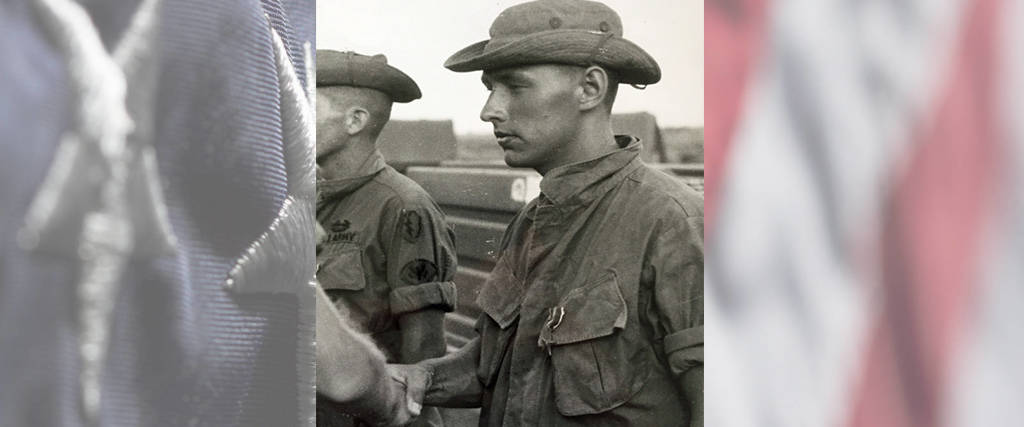U.S. Army Vietnam War Naperville, IL Flight date: July, 2019
By Mark Splitstone, Honor Flight Chicago Veteran Interviews Volunteer
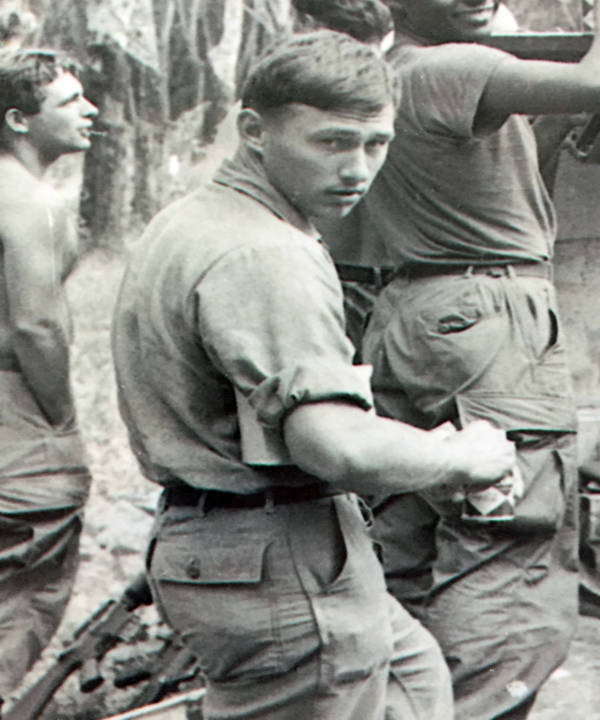
Bob Misevich was born in Chicago in 1946 and was raised in the Back-of-the-Yards neighborhood. His family was very patriotic. His dad and all his uncles fought in World War II. After graduating from high school, Bob went to college for a couple of years. When the Vietnam War started heating up, his patriotic spirit and love of country led him to enlist in the Army, even though he could have gotten a deferment. Bob went to Basic Training at Fort Knox, Kentucky, and then spent six months at Fort Sam Houston training to be a medic. When the training was over, the 500 men that had completed it lined up to learn where they would be sent. Bob thought that it would take a while to get through all 500 names, but it actually only took a few minutes. The officer in charge gave the various destinations for the first five people on the list and then said that the remaining 495 soldiers would all be going to Vietnam.
The primary role of the medic was to stop the bleeding and relieve the pain, then get the wounded soldiers on a medevac helicopter as quickly as possible. Bob didn’t wear anything identifying him as a medic because he says that medics would often be specifically targeted by the enemy. The enemy knew Americans were more likely to die if the medic wasn’t available. In addition to all his medical gear, he also carried an M-16 and a .45 caliber pistol. Bob says that the medevac personnel were fantastic and he was always amazed at how quickly they would come when called. There was one medic per platoon. A platoon consisted of forty to fifty men. Bob also went on frequent night patrols where there were usually only twelve soldiers.
Bob was assigned to a mechanized infantry unit with the 25th Infantry Division which included armored personnel carriers. He remembers getting off a helicopter when he first arrived and seeing some body bags. They were being loaded onto the same helicopter after he got off. He found out later that one of the body bags contained the medic that he was replacing. Bob recalls that the fighting in Vietnam was very difficult because the enemy always seemed to know where the Americans were, but the Americans didn’t know where the enemy was. Even when they received good intelligence and had a good idea where to find the enemy, it was still often difficult to find. This was because of the heavy foliage and because the Viet Cong were experts at digging-in and tunneling. He says that his unit always tried to be fair to the Vietnamese people and they never burned any villages or deliberately hurt any civilians. He is disappointed with how American soldiers who served in Vietnam are often portrayed in the media and film.
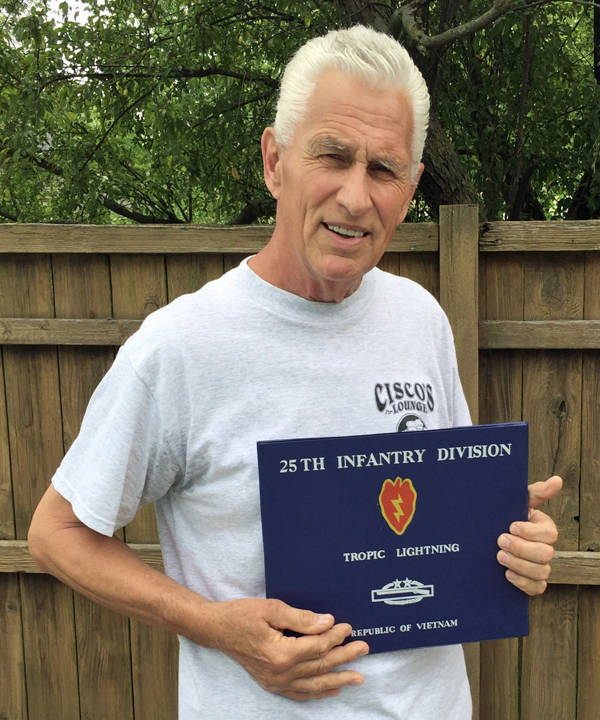
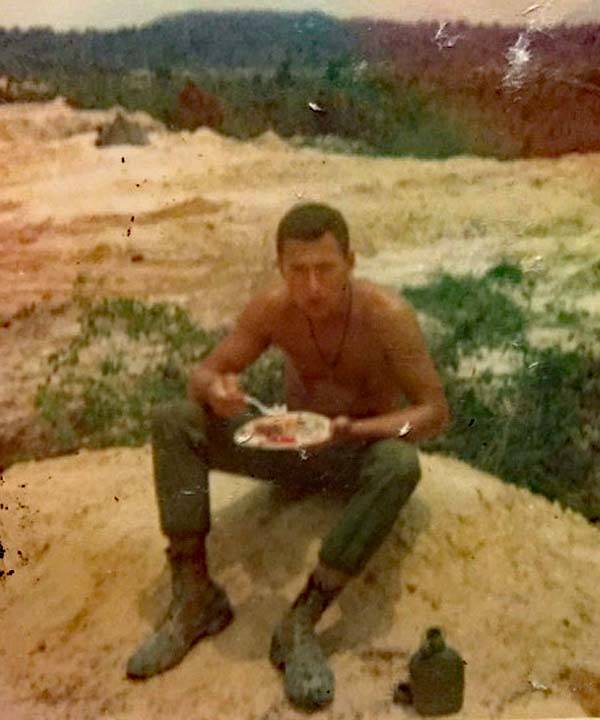
While most of their fighting was done at night, Bob has a vivid memory of a horrible scene that happened in the daytime. His unit was walking along a road and at the front of the column was an engineer from another unit who was sweeping the road for mines with a mine detector. He did find one and it exploded almost immediately. A call for a medic went out, but when Bob got there all that remained of the soldier was his torso and some smaller body parts which they put into a body bag. Bob distinctly remembers his hands and arms were covered in blood and flesh and how he tried to wash it off with water from his canteen as the company commander gave the order to move out. Because the soldier was from a different unit, Bob never knew his name or who he was and refers to him as the “unknown soldier.”
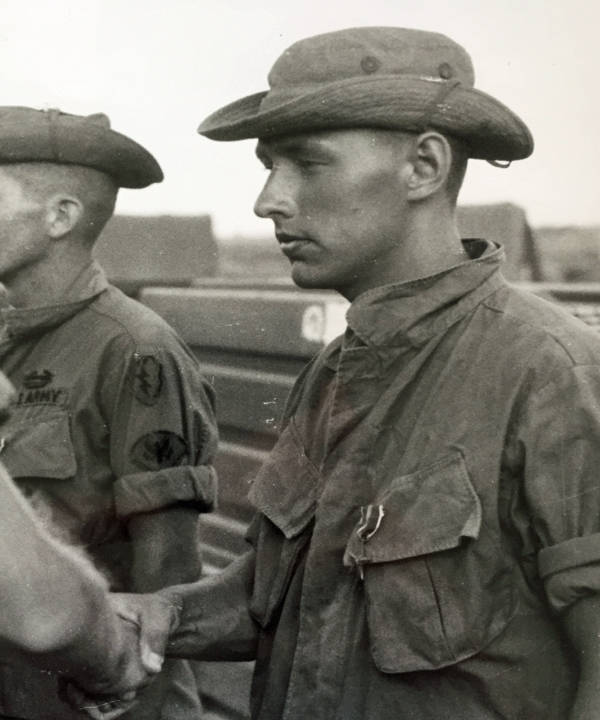
Some of Bob’s most haunting memories come from the Tet Offensive in early 1968. His unit had fairly good intelligence that an attack was coming and was prepared. He says that the enemy tried to overrun their perimeter and got to within fifty feet, but the .50 caliber machine guns of his unit just mowed them down. His unit had a great deal of firepower which became especially important during this battle. Most of their engagement with the enemy was very short, but in this case the battle lasted for a couple hours. That may not sound like much, but because of the intensity of the fighting, Bob says that it felt like an eternity. In the morning they did a body count and determined that they had killed over 100 enemy soldiers. Bulldozers were called up and pushed all the corpses into a trench. He says that the image of the corpses being pushed into the trench, along with the smell of the smoke and the dead bodies, was horrific and is something that he’ll never be able to get out of his mind. For his actions during this battle, Bob was awarded a Bronze Star for heroism. He would receive two additional Bronze Stars during his tour in Vietnam.
Bob and his wife Mary Ann became sweethearts when they were only 16 and planned to get married after he completed his military service. Shortly after he got to Vietnam, Bob was allowed to go for a week of R&R and the Army offered to fly Mary Ann to Honolulu to meet up with Bob. They decided to get married then and there rather than waiting until he returned. They have now been married for 52 years.
After a year in Vietnam, Bob came back to the United States and was stationed in Fort Benning, Georgia, before being honorably discharged in 1969. He came back to Chicago and got a job with Sears, where he had worked before joining the military. He says that Sears was great about hiring returning veterans. He ended up working his way up through the organization before eventually retiring in 2003 after nearly 40 years there. He and his wife settled in Naperville and have lived in the same house for 42 years. Bob and Mary Ann have three children and five grandchildren. Bob’s favorite thing about retirement is spending time with his grandchildren.
Bob says that when he first got back from Vietnam, he was focused on building his career and helping to raise a family so he generally put the horrible things that he had seen in the back of his mind. Now that he’s retired, he finds that the memories of more than 50 years ago come back to him more often because his mind isn’t as engaged with other things. He now feels closer to the memories than he did when he first got back. He is very much looking forward to his Honor Flight, in part so that he can get some closure. As a medic, he would often patch guys up, get them to a medevac helicopter, and that would be the last that he saw of them. In some cases he knows that they lived and in some cases he knows that they died, but there are others that he doesn’t know what happened to them. He recalls a young soldier named Estes who was shot in the jugular vein. The blood was shooting out three or four feet, and when Bob couldn’t stop the bleeding even using his biggest bandage, he took off his shirt and wrapped it around his neck to try to stop it. The last time he saw of Estes, the medevac personnel were trying to revive him as the helicopter took off. He has a list of some of the soldiers like Estes and he plans to look for their names on the wall.
Bob remains very patriotic and is proud of his service to his country and of the three bronze stars he was awarded while in Vietnam. He says that the soldiers he served with were just kids, but that being in the military makes you grow up quickly. Other than raising his family, his service to his country in Vietnam is the thing he’s most proud of.


